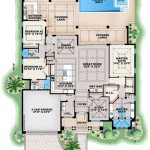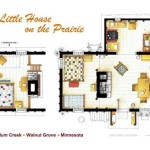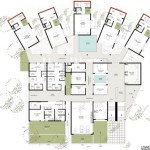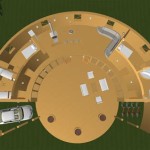What Is Elevation in Floor Plan Design?
When it comes to floor plan design, elevation is a crucial aspect that often goes overlooked. In essence, elevation refers to the vertical height of a structure or its components. Understanding and incorporating elevation into floor plan design can significantly enhance the functionality, aesthetics, and overall appeal of a space.
Vertical Dimensionality in Floor Plans
Elevation adds a sense of verticality to floor plans, breaking away from the traditional two-dimensional perspective. By incorporating elevation changes, such as raised platforms, sunken living areas, or multi-story structures, designers can create dynamic and visually interesting spaces.
Functional Considerations
Elevation in floor plan design also serves functional purposes. Raised platforms can be utilized for storage or seating, creating additional space without compromising floor area. Sunken living areas provide a cozy and intimate atmosphere, defining different zones within a room. Multi-story structures maximize space utilization, accommodating multiple functions in a compact footprint.
Example of Elevation in Floor Plan Design
For a practical illustration, consider a living room floor plan with a raised platform. This platform could be used to create a distinct seating area, elevating it above the main floor level. The platform can incorporate drawers or shelves for additional storage, optimizing space without cluttering the floor. The height difference adds visual interest and creates a focal point within the room.
Aesthetics and Visual Appeal
In addition to functionality, elevation can dramatically enhance the aesthetics of a space. Changes in elevation can create a sense of depth and perspective, guiding the eye through the room. Raised ceilings and mezzanines allow for the introduction of large windows or skylights, maximizing natural light and creating an airy atmosphere.
Accessibility and Universal Design
Elevation in floor plan design should also consider accessibility and universal design principles. Gradual ramps or elevators can be incorporated to ensure that different levels are accessible to individuals with mobility challenges. Additionally, varying floor heights can accommodate different body sizes and needs, promoting inclusivity.
Conclusion
Understanding and utilizing elevation in floor plan design is essential for creating functional, aesthetically pleasing, and inclusive spaces. By incorporating vertical height variations, designers can optimize space utilization, enhance visual appeal, and cater to the needs of all users.

How To Read House Plans Elevations

How To Draw Architectural Elevations From The Floor Plan

How To Read House Plans Elevations

How To Draw Building Elevation From Floor Plan In Archicad

Plan Section Elevation Architectural Drawings Explained Fontan Architecture

Elevations Designing Buildings

For Cross Section And Elevation Plans Cedreo

Floor Plans Of A House Project Overview Green Arch World

Example House Plans 3 Bedroom End Of Terrace Built To Let Fd8

Elevation View Vs Plan What S The Difference Cedreo








